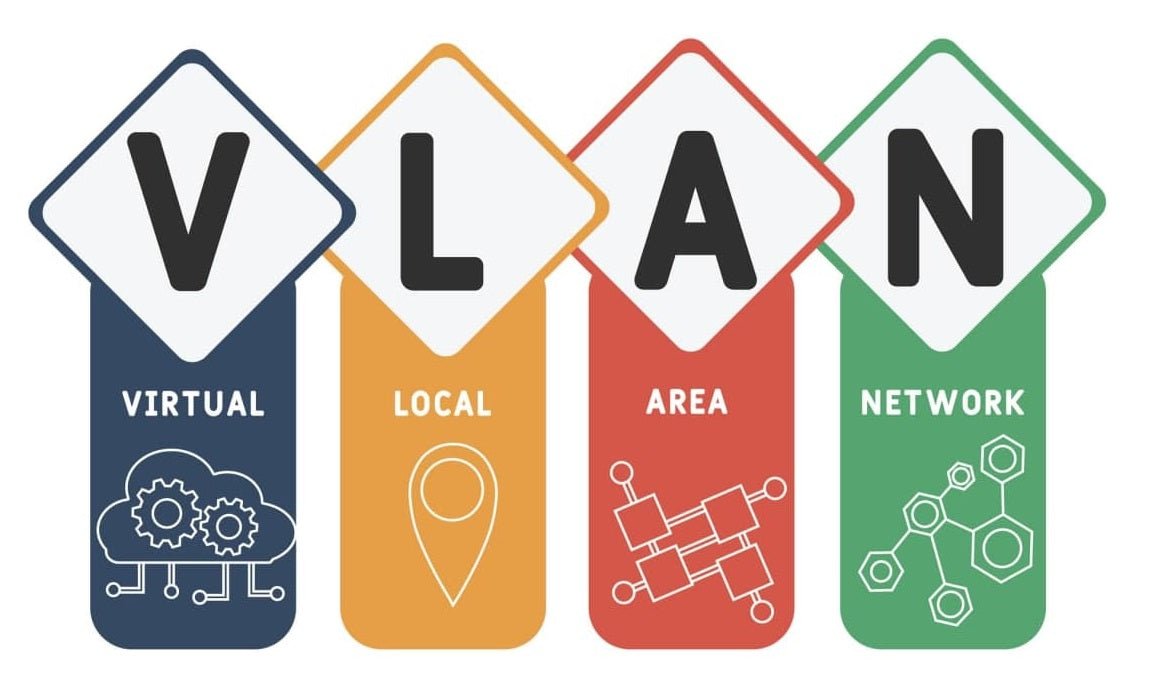
Top 5 Benefits of Implementing VLANs
Long gone are the days of the local area networks dominating the IT world. Although they are still prevalent in workplaces, the move to more secure and cost-effective technology within the industry has ensured that virtual local area networks have emerged as the go-to network for today's modern company. So, what is a virtual local area network?
What is VLAN?
A virtual local area network, or VLAN for short, is a collection of devices or network nodes that communicate like they make up a single LAN. However, as it is virtual, there can be several hundred or even thousands of LANs that are separated by a bridge, router, or Aruba switches like Aruba 6100 48G CL4 4SFP, R8N88A Aruba 6000 switch, R8N87A Aruba 6000 switch or Aruba 6100 24G 4SFP. Thus, if a workstation on a particular VLAN broadcasts packets, they reach all other workstations on their specific VLAN, but none outside of it.
How VLAN works
VLANs are remarkably similar to how a traditional LAN works but without the need for a single switch for every network. Instead, a VLAN can create multiple standalone networks within your existing network and breaks one switch into multiples. A VLAN allows your sales department and finance department to be on the same physical switch but virtually split via their VLAN. This means that neither side can access the other network as they lack access to that group. Essentially, a VLAN is a LAN but with the bonus of broadcast separations which speed up the network and an additional layer of security.
VLAN Ranges
| VLAN 0-4095 | The 0-4095 reserved range is for system use only, and you will not be able to see or use these VLANs |
| VLAN 1 | This is the standard or default range. You can use this VLAN but cannot delete it from your system |
| VLAN 2-1001 | This range is specific to ethernet VLANs. You can create, use, or delete these VLANs |
| VLAN 1002-1005 | This range is the default for FDDI and Token Ring |
| VLAN 1006-4094 | This range is the extended range for Ethernet VLANs |
Types of VLANs
Port-Based VLANA port-based VLAN allows you to assign ports on the switch to a VLAN. The number of ports on your switch is how many VLANs you can set up on the switch. For instance, if you have 16 ports on your switch, you can set up 16 VLANs. One port can be part of multiple VLANs and can help create easy-to-manage collaborating networks.
Protocol Based VLANA protocol-based VLAN will process traffic based on protocol. You can use these VLANs to define filtering criteria for untagged packets, for instance. The protocol will need to be written but can ensure that data is sent to the right place or someone is placed in the right group depending on how you are going to use VLAN.
MAC Based VLANA MAC-based VLAN will allow untagged packets to be assigned to a VLAN based on the source MAC address of the packet. An administrator could define a MAC to VLAN map by configuring an entry in the MAC to VLAN table. Once that is done, the MAC to VLAN configurations can be shared across all ports of the device.
5 Benefits of Implementing VLANs
One of the best reasons to implement a VLAN is the increased security in a virtual network. A LAN is one of the most secure options when building out a network, but many have asked, are VLAN secure? The answer is YES. VLANs use the same principles as LANs but simply in a virtual environment. This means that if there is an issue on a specific VLAN, it is limited to that network and will not spill over to the rest of the network. Thus, VLANs are a great way to roll out a work from home set-up or flexible work assets to the field with the risk-managed with ease.
One of the top VLAN benefits is the cost-effective nature of the technology. A traditional LAN requires you to have multiple switches within the network, but a VLAN allows you to use a single switch and digitally divide that switch to create separate VLANs. This saves you on switches; you can even have your VLAN replace a router if you are not looking to transfer data outside of the VLAN. However, if you are looking to send information or data outside of the network, you will need to use a router to make that happen. But it should be noted that you will need fewer routers to send data due to the nature of VLANs, and thus, will save your network time and money on networking gear.
As you can customize your VLAN configuration, you can really make your network smart and easy to set up. Your VLAN can be configured and assigned based on protocol, port, or subnet criteria, making it possible to alter your VLAN with ease. Plus, since you are not setting up a VLAN with a physical connection, groups can collaborate and share data with ease without the need to clog up valuable router time. No matter your work, a VLAN can be a flexible and powerful tool for your work environment.
Due to VLANs' nature, administrators can automatically limit access to specific files, data, or programs with ease. For example, if you have a VLAN filled with engineers and designers, you can restrict access to the specific programs and data that the group is working on and provide access to managers or directors to ensure the project is going well. This will decrease the amount of time and effort that it takes administrators to ensure security across teams and configuring specific roles or other necessary rules with other networking tools. VLANs make administration and providing a secure environment a breeze.
Although many administrators still ask how VLAN provides security, the honest answer is that VLANs are better at reducing internal and external threats than most networking options. As users are separated, only those within the VLAN have access to data, programs, and other tools to connect. Thus, VLANs naturally limit the threats of an issue from an internal user, and the same goes for external threats. Whether you are running your VLAN with unmanaged switches or a VLAN with a managed switch, the results are the same, a secure environment that limits threats to your network.
As one of the top networking equipment suppliers in Canada, IT Yuda assisted thousands of businesses in moving to VLANs. VLANs have all the benefits of LANs but with the bonus of a speedier network, compartmentalization, and added security for both internal and external threats to your growing business. If you are interested in setting up a VLAN, let the leading IT hardware supplier in the country set you up for success in the long term. The switch to VLAN is simple, easy, and will ensure that your company has the right network and groups to get you to that next level.
